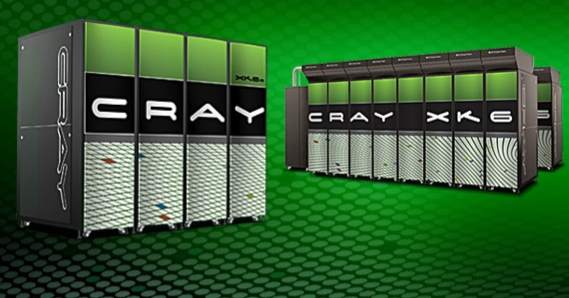Cray has introduced a hybrid supercomputing system that features key components from both AMD and Nvidia.
Dubbed XK6, the supercomputer combines Cray’s Gemini interconnect, AMD Opteron 6200 Series processors and Nvidia Tesla 20-Series GPUs to form a tightly-integrated system upgradeable to more than 50 petaflops (quadrillions of operations/second) of raw compute power.

According to Cray VP Barry Bolding, XK6 will help increase developer productivity with a unified x86/GPU programming environment that offers tools, libraries, compilers and support for third-party software.
“By combining AMD Opteron processors with Nvidia GPUs, the compute node in the Cray XK6 system gives users the option to run applications with either scalar or accelerator components,” Bolding explained.
“[Together] with [our] Linux Environment, the result is a fully integrated Cray supercomputer which blends scalable hardware, software and a network. Customers will be able to utilize the capabilities of a multi-purpose supercomputer designed for the next-generation of many-core, high performance computing (HPC) applications.”
So, what will the XK6 be used for, exactly?
Well, the Swiss National Supercomputing Centre (CSCS) is Cray’s first customer for the hybrid system.
As expected, XK6 will support CSCS scientists working in diverse fields such as weather forecasting, climatology, chemistry, physics, material sciences, geology, biology, genetics, experimental medicine, astronomy, mathematics and computer sciences.
“Given the remarkable interest in GPU technology from the Swiss computational science community, it is essential CSCS adopt this technology into its high-end production systems soon,” said CSCS director Professor Dr. Thomas Schulthess.
“However, we are not looking for another GPU based stunt to place high on any Top500 lists. The Cray XK6 promises to be the first general-purpose supercomputer based on GPU technology, and we are very much looking forward to exploring its performance and productivity on real applications relevant to our scientists.”






